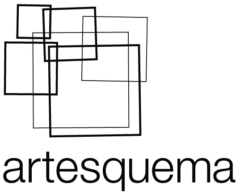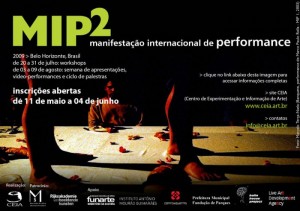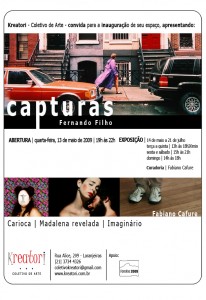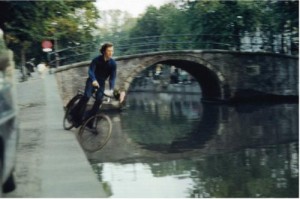Estão abertas as inscrições para o CEIA, em Belo Horizonte. Clique no flyer.
Month: May 2009
Kreatori Coletivo de Arte
Abravanation não é Abravanel
httpv://www.youtube.com/watch?v=IeVTA41M6WI
Bas Jan Ader
Este é o instantâneo de uma performance do holandês Bas Jan Ader. Interessado em explorar limites, Ader desapareceu no mar em 1975, quando tenatava atravessar o oceano Atlântico num minúsculo veleiro. A obra deste artista pode ser apreciada em vÃdeos e bibliografia no site http://www.basjanader.com/
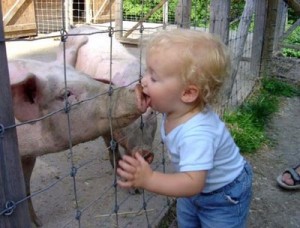
Fofo, né?!
O blog http://whatapic.blogspot.com tem um arsenal de imagens surpreendentes, artÃsticas, bizarras, incategorizáveis.
ASSEMBLÉIA GERAL – PRIMEIRA CONVOCAÇÃO
Próximo sábado, 9 de maio
ASSEMBLÉIA GERAL – PRIMEIRA CONVOCAÇÃO
Série de encontros e debates sobre arte, cultura, polÃtica, tecnologia, comportamento e improvisações.
16h30 – Frederico Coelho: “Livro ou Livro-me: os escritos babilônicos de Hélio Oiticica”
17h15 – Helena Aragão: “Overmundo: a cultura de todo Brasil na internet”.
18h РRaul Mouṛo entrevista Fausto Fawcett
ENTRADA FRANCA
Rua Joaquim Silva 71 – Lapa
(atrás da Sala CecÃlia Meireles)
É necessário confirmar presença pelo
email:Â contato@automatica.art.br
Apoio: Automatica   Natasha RB   Tecnopop
“Panorama estrangeiro” é atacado na web
Prá quem quiser acompanhar a discussão, há um link com depoimentos de algumas pessoas sobre o fato. Mas o melhor comentário é o de Ricardo Basbaum: “Parece que somente os curadores são capazes hoje de provocar polêmicas; antes estas eram produzidas pelas obras, pelos artistas. Se pensarmos na 28ª Bienal, a discussão que mobilizou a opinião pública foi provocada pelos curadores e não por qualquer artista ou obra da mostra”.
Acesse os links e leia mais.
Folha de São Paulo, 4/05/09
“Panorama estrangeiro” é atacado na Web
Tradicional mostra bienal sobre arte brasileira, agora curada por Adriano Pedrosa, gera polêmica por só ter estrangeiros
“Que presunção, que vaidade, que egocentrismo”, diz artista Artur Barrio; ideia também tem defensores, que a Ilustrada ouviu
FABIO CYPRIANO
DA REPORTAGEM LOCAL
Em vez de “Panorama da Arte Brasileira”, “Brazilian Art Landscape” é como o artista Alex Cabral propõe que seja denominada a mostra com curadoria de Adriano Pedrosa, a ser inaugurada em outubro, no MAM-SP (Museu de Arte Moderna de São Paulo).
Já a artista Ligia Borba sugere “Panorama da Arte Brasilianista”. O sarcasmo faz parte da maior parte das 58 mensagens já postadas (até o fechamento desta edição) no site Canal Contemporâneo, a partir da proposta de Pedrosa de não incluir artistas brasileiros na exposição com caráter bienal, criada há 40 anos.
No blog do Canal Contemporâneo -uma comunidade digital organizada pela artista PatrÃcia Canetti-, a grande parte dos comentários à proposta de Pedrosa, após reportagem publicada na Folha, é marcada por reações bastante violentas (http://www.canalcontemporaneo.art.br/
brasa/archives/002119.html).
Um dos exemplos é como o artista Artur Barrio contesta Pedrosa: “Que presunção, que vaidade, que egocentrismo, que exclusão, que ignorância”.
“Sabia que a proposta geraria polêmica, e o formato de blog propicia reações violentas. Como a curadoria é uma prática que exclui muito mais do que inclui, pois o conjunto incluso é sempre infinitamente menor do que o excluÃdo, quanto mais reputada a mostra curada, maior o número de potencialmente frustrados ou irados em relação a ela”, diz Pedrosa.
Opiniões favoráveis
A Folha ouviu outros 13 artistas e curadores (leia Ãntegra dos depoimentos em www.folha.com.br/091221) e a maioria, ao contrário do que ocorre no Canal Contemporâneo, posicionou-se a favor do projeto de Pedrosa. De todos, apenas a artista Carmela Gross e o curador Paulo Venancio Filho foram contrários à proposta.
A favor manifestaram-se os artistas Jac Leirner, Rivane Neuenschwander, Rosângela Rennó, Sandra Cinto e Ricardo Basbaum, além dos curadores Agnaldo Farias, Lisette Lagnado, Daniela Labra, Rodrigo Moura, Cristiana Tejo e Felipe Chaimovich.
Curador do MAM-SP, Chaimovich coloca a instituição em defesa de Pedrosa: “O “Panorama” caracteriza-se pelo questionamento regular da natureza da arte brasileira e o debate gerado pela proposta curatorial de 2009 mostra a relevância de uma reflexão renovada a cada edição, quebrando expectativas e apontando interpretações inesperadas, como cabe a um museu de arte moderna”.
No entanto, nem todos são a favor da ideia de forma integral, apresentando algumas ressalvas, como o artista e curador Ricardo Basbaum.
“Parece que somente os curadores são capazes hoje de provocar polêmicas; antes estas eram produzidas pelas obras, pelos artistas. Se pensarmos na 28ª Bienal, a discussão que mobilizou a opinião pública foi provocada pelos curadores e não por qualquer artista ou obra da mostra”, diz ele.
“Isso me preocupa: obras e artistas não estão sendo mais percebidos enquanto agentes provocadores, e sim os curadores”, completa Basbaum, que está em cartaz em São Paulo, na galeria Luciana Brito.
A polêmica, contudo, está ajudando o curador a redefinir sua própria exposição.
“A princÃpio, eu tinha pensado em fazer uma exposição mais esparsa, com um número menor de artistas, mas agora estou considerando incluir mais obras, mais exemplos de “arte brasileira feita por estrangeiros”, sem querer esgotar o assunto, mas tornando o argumento mais claro”, diz Pedrosa.
HISK / Higher Institute for Fine Arts
HISK
Hoger Instituut voor Schone Kunsten / Higher Institute for Fine Arts
Charles de Kerchovelaan 187a
9000 Gent
Belgium
Phone: +3292696760
Fax: +322696770
Contact:
info@hisk.edu     www.hisk.edu
Deadline submission applications for work years 2010-2011:
Monday June 15, 2009
HISK – Higher Institute for Fine Arts
Advanced Studies & Practice-based Research in Visual Arts
The Higher Institute of Fine Arts (HISK) organizes postgraduate education in Flanders in the field of the audiovisual and visual arts. It provides approximately twenty-five young artists from Belgium and abroad with a studio of their own for the duration of two years along with specific, tailor-made guidance.
At the HISK, emphasis lies mainly on individual practice with an international focus. The visiting lecturers are crucial. Artists, curators, critics and theoreticians pay individual studio visits at regular intervals. There are also frequent visits to significant art events and lectures, seminars and workshops are provided. The HISK also offers technical facilities and production opportunities.
Thanks to the unique HISK concept, the participants are given every opportunity to invest in critical research of their work in order to situate it within a broader artistic, cultural and societal context.
At the end of the two-year working period, the participant receives a certificate of ‘Laureate of the HISK’. The HISK is officially recognized as Higher Institute and is financed by the Flemish Community – Ministry of Education and supported by the City of Ghent.
Since 1997, 148 laureates have graduated from the HISK. The largest part of them are currently building up a successful professional career in the Belgian and international art world.
In 2009, the candidate-laureates working at the HISK come from Canada, Japan, Ethiopia, South Africa, Israel, the Czech Republic, Switzerland, Portugal, France, Germany, the Netherlands and Belgium. An international jury selected them from more than a hundred candidates.
The Open Studios give the candidate-laureates the opportunity to undergo a confrontation with the public and to generate a great deal of feedback from visual arts professionals. It also offers the audience access to and an insight into the artistic development of a young generation of artists who will play a part in shaping the future of the arts landscape.
APPLICATIONS FOR CANDIDATES 2010-2011
Artists who have already obtained a Masters degree in Fine Art or an equivalent qualification are eligible to apply to the HISK. Exceptions can be made for applicants who do not have a Post Graduate degree in Fine Art but display a high level of development, motivation and artistic affinity. This is decided on the basis of an interview in which an applicant’s experience, professional or otherwise, is discussed.
A diverse group of artists who are able to work together as a community are chosen each year. All young practitioners selected for the program are believed to share a common potential for growth.
The admission committee is composed of international visiting lecturers from a variety of backgrounds. They make a pre-selection from the submitted portfolios and the candidates who make it through are invited for an interview regarding their motivations and expectations. After a period of evaluation and careful consideration, the committee then makes a decision as to whether the applicant is suitable.
The conceptual and visual qualities in the works submitted by applicants are considered to be more important than style, material or technique. Participants are expected to have a strong commitment to conducting critical research within their respective fields of interest. At the same time, they should aim towards locating their practice within a broader perspective of social and cultural environments. Candidates are also expected to make a contribution to the activities of the HISK as a whole. This interaction is seen to be an important forum of exchange and development.
Basic criteria for assessment are:
– The quality of the submitted work
– Evidence of a potential to explore various aesthetic possibilities
– The degree to which the work distinguishes itself from overt influences
– The coherence of the body of work
– The social/political relevance of the work
– The quality of presentation in the submitted portfolio (both text and images)
– Motivation for choosing the HISK
– Willingness to be involved in the HISK programme and ability to set aside time for this
– Ability to speak about your work and thinking around it
– The potential to grow within the HISK programme, both on an artistic and a personal level
– Evidence of sufficient maturity to be able to work independently
Each year between 12 and 14 candidate laureates are admitted.
APPLICATION CANDIDATURES 2010-2011
Please send the following:
1. Information
• A completed application form (see: www.hisk.edu)
• Your personal motivation and work plan (in English, ca. 1 page)
• A detailed Curriculum Vitae (including a list of exhibitions, grants, scholarships, awards, commissions, etc)
• Catalogues and texts describing your artistic work (optional)
• Maximum 3 letters of recommendation (optional)
• 4 recent passport photographs (with your name on the back)
• A copy of your ID card or passport
2. Presentation / portfolio
• Power Point or PDF presentation on CD (Mac compatible), along with clear labels stating title of work, medium, date and measurements (if necessary) + bound print out of the presentation (colour or black & white)
• Films and videos on DVD, if possible with menu
File to be sent to: HISK / Higher Institute for Fine Arts
Charles de Kerchovelaan 187a, B-9000 Gent, Belgium
